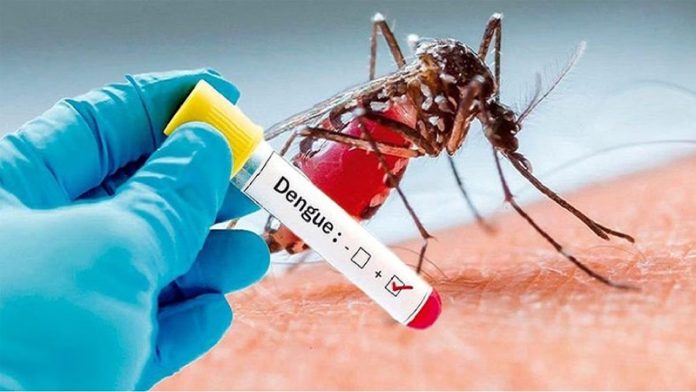Vector-borne diseases wreak havoc in Jammu
*Experts call for increased surveillance, preventive measures
Govind Sharma
JAMMU, Nov 17: The Jammu region is grappling with an alarming surge in vector-borne diseases, with dengue and chikungunya cases reaching unprecedented levels. This calls for robust preventive measures, enhanced healthcare interventions, and heightened community awareness to curb the spread of these mosquito-borne illnesses and safeguard public health.
Follow the Daily Excelsior channel on WhatsApp
According to official reports, a staggering 6,171 cases of dengue and 307 cases of chikungunya have been documented so far this year, raising significant public health concerns. The steep rise in infections underscores the urgent need for preventive measures and robust healthcare interventions to combat the spread of these mosquito-borne illnesses effectively.
Dengue, the more prevalent of the two diseases, has been reported in large numbers across various districts. Jammu district alone accounts for 3,778 cases, making it the worst-hit area. Other affected districts include Samba with 649 cases, Kathua with 604, Udhampur with 329, Reasi with 296, Rajouri with 185, Doda with 171 and Poonch and Ramban, each with 69 cases. Kishtwar, while less impacted, has reported 21 cases. Additionally, 24 cases have been documented in the Kashmir region, and 40 cases involve residents of Jammu and Kashmir who tested positive in other States or Union Territories.
The infections showed no sign of abating, as 50 new cases were reported in Jammu district alone on Saturday, with additional cases emerging in Kathua, Udhampur, Samba, Doda and the Kashmir region. Although the fatality rate remains lower compared to last year, when dengue claimed 10 lives, one death has been reported this year.
Chikungunya, though less widespread, is another growing concern in the region. Of the 309 cases reported across J&K, 307 are from the Jammu region, with Jammu district itself accounting for 293 cases. Other affected districts include Udhampur with 10 cases, Kathua with 3 cases, and Rajouri with one case. One case has been reported from the Kashmir region, and another from residents diagnosed outside the region.
Chikungunya first emerged in Jammu division in 2016, with no prior records of the disease in the province. Since then, isolated cases were reported, including one in 2018. While no fatalities have been linked to chikungunya, its persistence and sudden increase in infections highlight the need for intensified vector control efforts and public awareness initiatives.
Both dengue and chikungunya are caused by the Aedes mosquito, a highly adaptable vector that thrives in urban and semi-urban environments. Experts pointed out that favorable breeding conditions, such as stagnant water and rising temperatures, have contributed to the surge in cases. Dengue symptoms include high fever, severe headache, muscle and joint pain and skin rashes, with severe cases potentially leading to life-threatening complications. Chikungunya manifests with fever, joint pain, fatigue and skin rashes and while rarely fatal, it can cause debilitating joint pain that affects patients’ quality of life.
The ongoing crisis has prompted authorities to intensify control measures, including fumigation drives, public awareness campaigns, and close monitoring of mosquito breeding sites. However, challenges remain, particularly in densely populated areas and regions with poor sanitation infrastructure.
Emphasizing the critical role of community participation in combating these diseases, Health officials said that simple preventive steps, such as using mosquito repellents, wearing protective clothing, and eliminating standing water in and around homes, can significantly reduce infection risks.
The escalating burden of dengue and chikungunya in Jammu underscores the urgent need for a coordinated response involving healthcare authorities, local Governments and communities.


